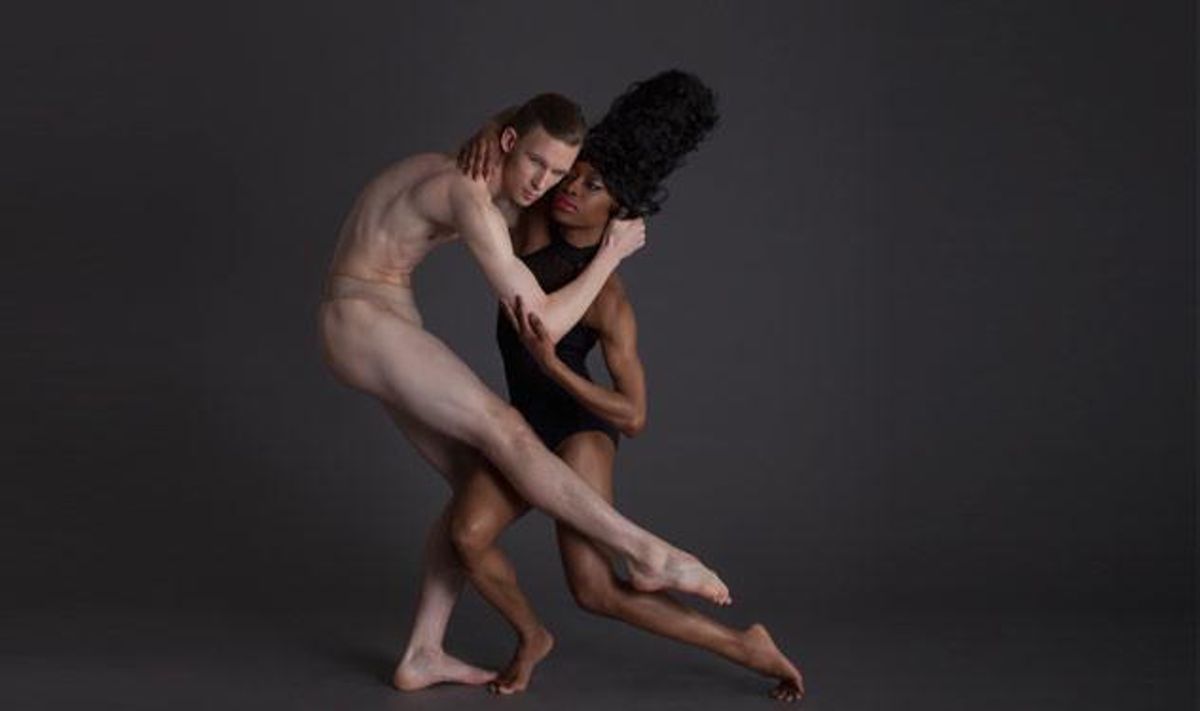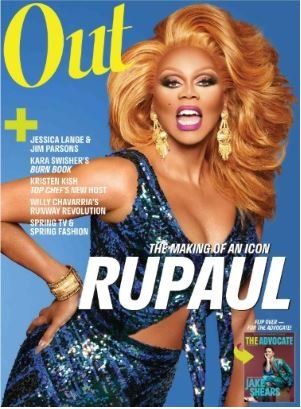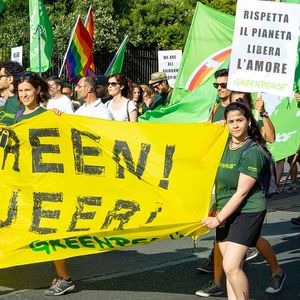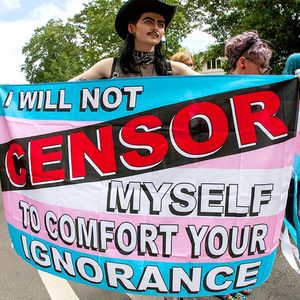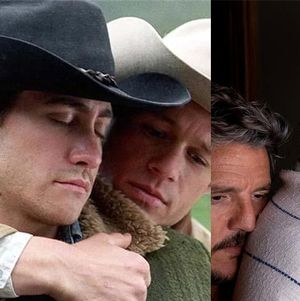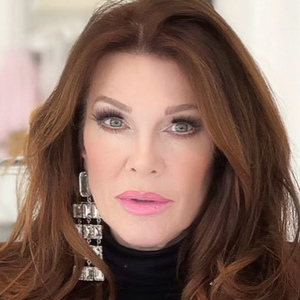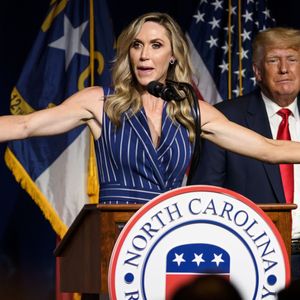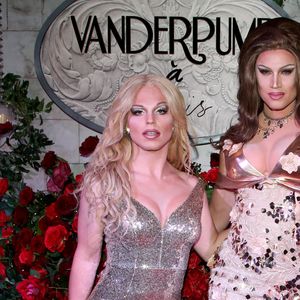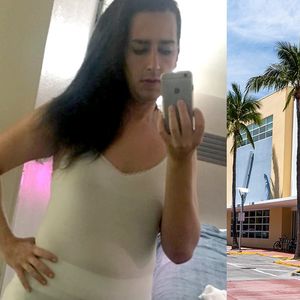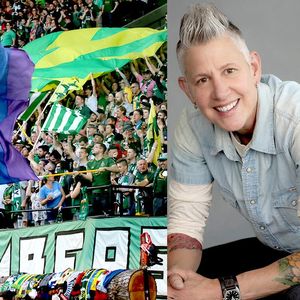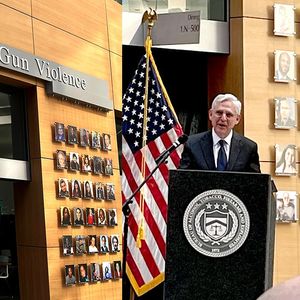Kyle Abraham's "The Watershed" featuring Chalvar Monteiro | Photo by Steven Schreiber
The old cliche goes that art imitates life, or life imitates art -- I can never remember which is the chicken and which the egg. Either way, the point is that they're often, accidentally, one and the same. But the implications are different: the former suggests that one's biography inevitably seeps into one's art; the latter reminds us that art can never escape the social and historical context it's born into. Choreographer Kyle Abraham has been struggling with this distinction throughout his career.
"It's frustrating sometimes," Abraham explains to Out, about the way current events color an audience's perception of his work. "I'm making works a lot of times about my story and then they tie into something that's happening [in the world]." Such associations, he says, can be both inspiring and limiting.
In 2010, Abraham's well-receivedThe Radio Show drew from his experience growing up as a black gay man in Pittsburgh and coincided with the suicide of Tyler Clementi. In 2012, his work Pavement, which nodded to Boyz n the Hood, W.E.B. Du Bois and Abraham's time in Pittsburg, was suddenly infused with unforeseen meaning when Trayvon Martin was shot. This week, Abraham presents the culmination of a two-year residency at New York Live Arts with two separate programs addressing, in part, the history of race in America. Whether he likes it or not, the ghost of Michael Brown will be present.
However unintentional, the way Abraham's art has been riding the wave of recent history has contributed to an extraordinary amount of attention and support from the dance community and beyond. In addition to his coveted NYLA residency, the 37-year-old was named a MacArthur Fellow last year, which is about as prestigious a validation as you can get.
So in addition to the burden of history, Abraham is finding himself facing great expectations amongst colleagues and critics as well. ("I'm scared shitless," he says, with a big, characteristic laugh, of how the new work will be received.) But never mind the pressure; the process has been a fulfilling adventure, thanks to his collaborators, the noted visual artist Glenn Ligon, whose work hangs in the White House, and the Grammy-winning jazz musician Robert Glasper.
Two weeks before the premiere, Abraham and Ligon sat with me around a conference table above the theater where the work would be shown in the heart of Chelsea. Glasper calls in from Los Angeles. The three hadn't known each other before being introduced in the early stages of the project. But two years later, they share an easy, honest connection, a deep respect for one another's work, and a tendency to address serious issues with dry humor. The two parts of their collective artistic statement can be seeing on varying nights between September 23 and October 4 at NYLA.
The Watershed is an evening-length work for nine dancers that traces the trajectory of civil rights in America. "It's a nod to the '60s and to present day and maybe what is to come," Abraham says. Embedded in it is Abraham's inclination to inclusivity. "Everyone has some version of a story of oppression in some way, shape or form so the work is not meant to isolate." It is also, as Abraham put it, "heading toward hopeful."
The second, decidedly more ominous evening, called When the Wolves Came In, is comprised of three distinct works. The first is an ensemble piece that shares the evening's title and is infused with the "anger and fire you feel before the protest"; The Gettin', with original music by Glasper, considers "how much has shifted, what's changed, are we able to yell now?"; and Hallowed, set to gospel music, taps into "that moment before you cry, before you scream, or wanting to scream and not being able to." (Abraham is set to perform in the latter but an injury may prevent him from doing so.) Ligon created the sets for both evenings.
The philosophical and spiritual glue that ties the works together is Max Roach's seminal 1960 jazz album We Insist: Max Roach's Freedom Now Suite, which commemorated the centennial of the Emancipation Proclamation and was a powerful affirmation of the civil rights movements germinating in Africa and America at the time. The collaboration between Abraham, Ligon and Glasper is both a salute to, and reinterpretation of, that album.
"Max Roach is a hero of mine," Glasper says. "Musically, and what he stood for politically." Roach was one of the first jazz musicians to embrace and incorporate hip-hop into his work, something that Glasper has been celebrated for as well. We Insist is commonly referred to as a protest album. When asked whether The Watershed and When the Wolves Came In were protest pieces, the three men fell into a long silence, finally broken by uncomfortable laughter.
"There are pockets of protest," Glasper says. "For me, I don't think I see the whole thing as a protest, necessarily." For him, the works are more of an invitation to conversation. "Let's talk about what happened," he says, "let's talk about what's happening."
Of course, "what's happening," most recently, is the unrest in Ferguson, Missouri, following the killing of Michael Brown, an unarmed black teenager, by a white police officer, which ignited weeks of local protests this summer and a national debate about race and the militarization of law enforcement. For the artists, it was an unfortunate new chapter in the cycle of injustice that they were already addressing.
"That's the irony of the work," Ligon explains, when asked if and how the events in Ferguson influenced the work. "This isn't anything new at all. Ferguson, I'm sorry to say this, isn't a seismic shift for me."
"This has been the subject matter all along," Abraham agrees.
Though the conceptualization of the work predates Ferguson, the proximity of that incident to the premiere will invite inevitable comparisons. Abraham seems to have mixed feelings about this: on one hand, he wants his art to contribute to a broader dialogue on these issues; on the other hand, he wants his art to speak for itself.
It's a tension that Bill T. Jones has experienced for much of his long career. Halfway through our conversation, Jones, the venerable choreographer whose work has explicitly and implicitly commented on race and sexuality for decades, pops into the room. His dance company, the Bill T. Jones/Arnie Zane Dance Company, is part of the organizational fabric of NYLA and he has served as an advisor to Abraham on this project. Jones immediately engaged Abraham in a conversation about the burden of meaning often placed on black choreographers.
"You're OK with this piece being a Black History Month piece?" he asks.
"I'm OK with that as an entry point for some people," Abraham replies. "One thing that's kind of frustrating for me, I do feel like as a choreographer of color, I think it's a lot harder for me to make an abstract dance and still have it have some personal meaning and it's not imperative that an audience gets that meaning."
"It's something we've been struggling with for some years now," Jones says. "Merce [Cunningham] used to say that dance cannot be abstract because bodies are not abstract. A black choreographer, and I dare say a black gay choreographer, who is in a time when the battle lines are really very clear about your validity and your point of view, is it possible that you can make a dance where it means nothing about race or sex? I always say, 'Look, my politics are like my face.' I got so tired of answering that question."
"And I think that's what's wonderful about your work," Jones continues, speaking directly to Abraham. "You are really able to effortlessly talk about a pansexual world and a world where power dynamics are constantly changing, not rooted in the gender, not rooted in the skin color of your performers. I think that's what makes you a very important contemporary dance maker."
"That's the goal," Abraham says. "That's the struggle."
Kyle Abraham/ Abraham.In.Motion perform "The Watershed" & "When the Wolves Came In" Sept. 23-Oct. 4 at New York Live Arts.
